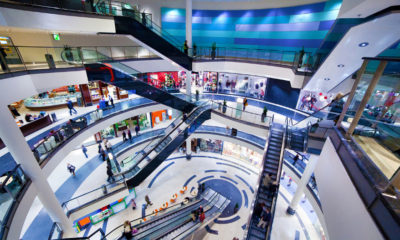It's become a familiar site in virtually every American city. Sprawling shopping complexes with empty buildings adorned with the ghostly echo of removed brand signs.
Inside the traditional shopping mall, it's not much better. With vacancy rates at a 20-year high, mall managers are trying everything from discounting rates and short-term leases to embracing pop-up retail. And though some of these tactics are innovative and filling in spaces – for now – for the most part, they are band-aid fixes covering up a far greater problem.
The mall, as we know it in the U.S., simply isn't relevant to today's shopper. Gone are the days when the convenience of a collection of disparate stores under one roof is essential. Today we have the Internet, with infinite diversity only a click away. And time-pressed shoppers want the convenience of in-and-out surgical shopping rather than the long walk from the fringe of the parking lot for a day of leisurely browsing.
But the humble mall does have a chance to reinvent itself. At the World Retail Congress, a diverse group of speakers including a retailer, an architect and a mall operator all discussed the question: What is the future of the mall?
And surprisingly, a strong consensus emerged.
A social gathering place that offers more than just shopping
Advertisement
The shopping mall at Potsdamer Platz in Berlin is surrounded by high-end restaurants, movie theaters, a casino and a performing arts venue. The streets connecting these locations boast a changing variety of festivals, complete with pop-up taverns and a temporary downhill ski slope. Inside the mall proper, an exhibit on the “shoeshine boy” culture informed and inspired, even featuring a stand selling the traditional favorite cuisine of the shoeshine boys. And all of this in addition to a great collection of stores, anchored by not one but two grocery stores.
Integration with the virtual world
Bluewater mall in Kent, U.K., features an innovative solution to two problems that vex most malls. With a two-story limit imposed by local council, Bluewater created a virtual “third floor,” an online-only part of the mall that holds virtual stores for retail brands waiting for store space to open up in the mall. With no vacancies, there are 189 brands on the waiting list to fill one of the mall’s 320 store spaces. In the meantime, they can engage mall shoppers virtually and test the waters with brand concepts and offers prior to physically moving into the mall.
Pop-up retail is a part of the draw of the mall
In many U.S. malls, vacant space fills up twice a year: before Halloween with costume stores and right after with Christmas stores. But pop-up retail is now attracting luxury brands to create a time-urgent destination for shoppers such as Dunhill's New York pop-up and Longchamps' temporary store in Tokyo. This marriage allows the mall to get more affluent and upscale shoppers onto the premises and gives luxury brands a presence in markets that can't support a year-round branded store.
These ideas aren't a prescription for all that ails the American mall, but rather a diagnosis of what needs to improve for long-term sustainable viability for these properties. And despite the rough economy of the last few years, this is the time for malls to draw inspiration from new retail developments around the world and create something that isn't there for many malls today: a reason to shop there.
Advertisement
Jim Crawford is executive director of the Global Retail Executive Council.

 Headlines7 days ago
Headlines7 days ago
 Headlines2 weeks ago
Headlines2 weeks ago
 Headlines2 weeks ago
Headlines2 weeks ago
 Headlines2 weeks ago
Headlines2 weeks ago
 John Ryan2 weeks ago
John Ryan2 weeks ago
 Sector Spotlight1 week ago
Sector Spotlight1 week ago
 Headlines2 weeks ago
Headlines2 weeks ago
 Headlines6 days ago
Headlines6 days ago















